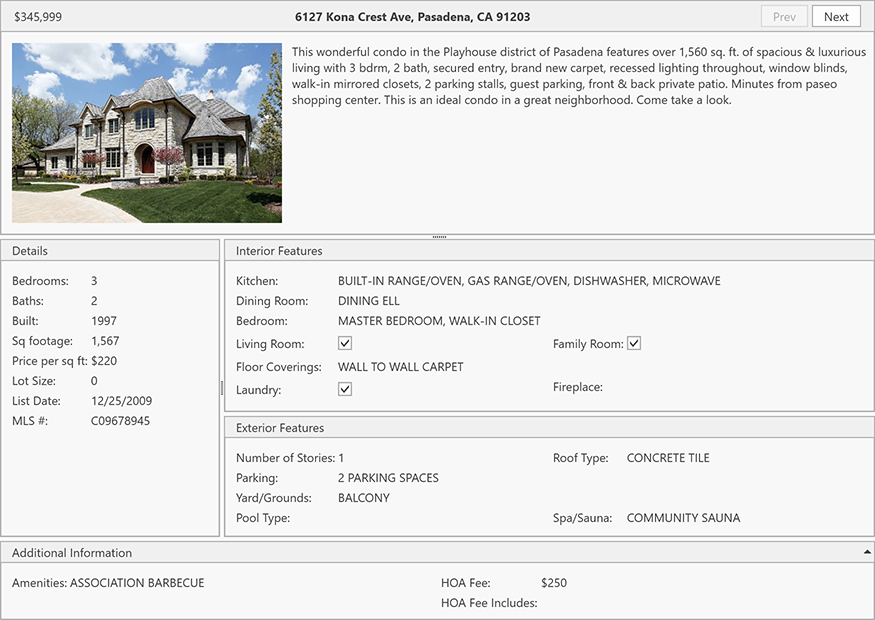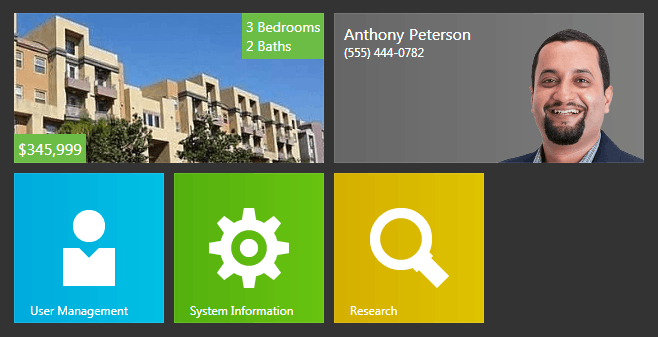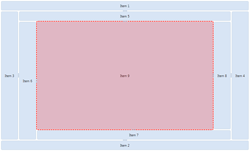Tile and Layout
- 4 minutes to read
This section contains descriptions for multiple layout managers that assist you in building various window layouts, from a simple flow layout to complex data entry forms.
Layout and Data Layout Controls

A universal solution for control arrangement requirements that allows you to generate windows and pages with a wide variety of layout scenarios. The Layout Control automatically maintains a consistent layout of child controls, so that they never overlap when the window is resized, controls are added or removed, or when the font settings of the controls are changed.
Refer to the following links to learn more:
Getting Started (online video)
See the online video to learn how to arrange your elements across the window using the Layout Control.
-
An overview document that describes the main Layout Control features and concepts.
-
A data-aware version of the LayoutControl that automatically generates a window layout based on the given data source. Shares all concepts and features provided by a regular Layout Control. Supports data attributes for code-first data sources. These attributes primarily customize layout items that will be created for specific data properties.
-
Layout items are objects that wrap controls hosted within Layout and Data Layout Controls. These objects display labels for their child controls and can be aligned grouped into layout groups. Layout groups can host other layout groups and display their child items as tabs or side-by-side.
-
In this mode, end users can modify the layout of controls within the Layout and Data Layout Controls according to their requirements.
-
This feature allows an end user to hide layout items in Customization Mode. To restore the hidden items, users can drag them from the ‘Available Items’ list onto the layout.
Tip
Tile Layout Control

The TileLayoutControl allows you to bring a radical new look to your WPF applications with the Windows Modern UI design principles. The list below enumerates major control features.
- Provides compound tiles (objects of the Tile class) of four pre-defined sizes.
- Tiles can be united into tile groups that display captions.
- Built-in animation support that allows you to change tile content at a specified time interval.
- Support for drag-and-drop operations.
- Fully compatible with touch-input devices.
Tip
Topic: Tile Layout Control
Flow Layout Control

The FlowLayoutControl is an item container that hosts any UIElement objects, arranging them one after another in rows or columns. The following list enumerates features provided by this control.
- Two flow directions.
- Automatic item wrapping. You can also manually choose items that should break the flow into a new column (row).
- Items can be stretched vertically or horizontally to fit the client area in the given direction.
- End users can resize item rows and columns by dragging separators that delimit these rows (columns).
- Elements can be maximized to occupy most of the control’s client region. The remaining space will be used to display other items, arranged into a single column (row) along the specific control’s edge.
- GroupBox controls, hosted within the Flow Layout Control, display ‘Maximize’ buttons in their headers.
- Support for runtime drag-and-drop operations.
- The drag scrolling feature allows your end users to click-and-drag the control’s empty space to scroll through items.
- All resize, re-arrange, and scroll operations can be accompanied by animation effects.
Tip
Topic: Flow Layout Control
Dock Layout Control

The DockLayoutControl is a container that hosts any UIElement object. These elements can be docked to the left, top, right or bottom edge, or occupy the control’s remaining region. This control supports the following features:
- Five dock modes for each UIElement hosted within the control.
- Support for runtime item resizing. Depending on your settings, items will be able to resize in both horizontal and vertical directions, in one specific direction, or not resize at all.
- Elements hosted within the Dock Layout Control can automatically stretch in either direction to occupy all available client space.
If you need a tool to emulate a Microsoft Visual Studio-like UI rather than dock elements to control edges, use the Dock Layout Manager component instead.
Tip
Topic: Dock Layout Control
Common Features
This section gathers features, common to all controls included in the Xpf.LayoutControl library.
-
Learn how to save and restore an item layout to (from) a stream or local storage.